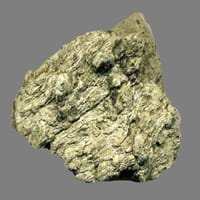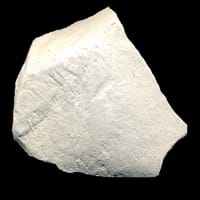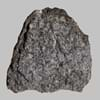Definition
Dacite is a volcanic igneous rock which is rintermediate in composition between andesite and rhyolite
Chalk is a soft, white, powdery limestone consisting mainly of fossil shells of foraminifers
Origin
Romania and Moldova, Europe
Unknown
Discoverer
Unknown
Unknown
Etymology
From Dacia, a province of the Roman Empire which lay between the Danube River and Carpathian Mountains where the rock was first described
From old English cealc chalk, lime, plaster; pebble, from Greek khalix small pebble, in English transferred to the opaque, white, soft limestone
Class
Igneous Rocks
Sedimentary Rocks
Sub-Class
Durable Rock, Soft Rock
Durable Rock, Soft Rock
Group
Volcanic
Not Applicable
Other Categories
Fine Grained Rock, Medium Grained Rock, Opaque Rock
Fine Grained Rock, Opaque Rock
Texture
Aphanitic to Porphyritic
Clastic or Non-Clastic
Color
Bluish - Grey, Brown, Grey, Light to Dark Grey
Grey, White, Yellow
Durability
Durable
Durable
Appearance
Vesicular
Soft
Interior Uses
Decorative Aggregates, Entryways, Interior Decoration
Decorative Aggregates, Homes, Interior Decoration
Exterior Uses
As Building Stone, Paving Stone, Garden Decoration
As Building Stone, As Facing Stone, Paving Stone, Garden Decoration
Other Architectural Uses
Curbing
Powder
Construction Industry
As Dimension Stone, Construction Aggregate, for Road Aggregate, Landscaping
As Dimension Stone, Cement Manufacture, Construction Aggregate, for Road Aggregate, Making natural cement, raw material for manufacture of quicklime and slaked lime, Source of calcium
Medical Industry
Not Yet Used
Not Yet Used
Antiquity Uses
Artifacts
Artifacts, Monuments, Sculpture, Small Figurines
Commercial Uses
Commemorative Tablets, Creating Artwork
Alumina Refineries, Creating Artwork, Drawing on blackboards, Gymnasts, athletes and mountain climbers use for grip, In aquifers, Paper Industry, Production of Lime, Raw material for manufacture of quicklime, slaked lime, Soil Conditioner, Whiting, Whiting material in toothpaste, paint and paper
Types
Footwall Dacite, Hanging wall Dacite, Tuff and Biotite Dacite
Not Available
Features
Host Rock for Lead, Is one of the oldest rock
Clasts are smooth to touch, Is one of the oldest rock, Smooth to touch, Very fine grained rock
Archaeological Significance
Monuments
Not Yet Used
Used
Famous Monuments
Not Applicable
Data Not Available
Sculpture
Not Yet Used
Used
Famous Sculptures
Not Applicable
Data Not Available
Figurines
Not Yet Used
Used
Formation
Dacitic magma is formed by the subduction of young oceanic crust under a thick felsic continental plate. Further, the Oceanic crust is hydrothermally altered as quartz and sodium are added.
Chalk is formed from lime mud, which accumulates on the sea floor which is then transformed into rock by geological processes.
Mineral Content
Amphibole, Apatite, Biotite, Feldspar, Garnet, Hornblade, Magnetite, Plagioclase, Pyroxene, Quartz, Zircon
Calcite, Clay, Clay Minerals, Quartz, Sand
Compound Content
Ca, Fe, Potassium Oxide, Mg, Potassium, Silicon Dioxide
Ca, NaCl, CaO
Types of Metamorphism
Burial Metamorphism, Cataclastic Metamorphism
Not Applicable
Types of Weathering
Biological Weathering, Chemical Weathering, Mechanical Weathering
Biological Weathering, Chemical Weathering
Types of Erosion
Chemical Erosion
Chemical Erosion, Coastal Erosion, Water Erosion
Grain Size
Medium to Fine Coarse Grained
Very fine-grained
Fracture
Conchoidal
Not Available
Porosity
Less Porous
Highly Porous
Luster
Subvitreous to Dull
Dull
Cleavage
Perfect
Non-Existent
Toughness
Not Available
1
Specific Gravity
2.86-2.87
2.3-2.4
Transparency
Translucent
Opaque
Density
2.77-2.771 g/cm3
2.49-2.50 g/cm3
Resistance
Heat Resistant, Impact Resistant, Pressure Resistant, Wear Resistant
Heat Resistant
Deposits in Eastern Continents
Asia
Not Yet Found
Brunei, India, Indonesia, Malaysia, Singapore, Thailand, Vietnam
Africa
Not Yet Found
Cameroon, Chad, Ghana, Kenya, Malawi, Sudan, Tanzania, Togo, Zambia, Zimbabwe
Europe
France, Greece, Romania, Scotland, Spain
England, France, Germany, Spain, United Kingdom
Others
Not Yet Found
Not Yet Found
Deposits in Western Continents
North America
USA
Canada, USA
South America
Argentina, Bolivia, Chile, Colombia, Ecuador, Peru, Venezuela
Colombia
Deposits in Oceania Continent
Australia
New Zealand, South Australia, Western Australia
Adelaide, New Zealand, Queensland, Tonga, Victoria, Yorke Peninsula
Dacite vs Chalk Characteristics
Though some rocks look identical, they have certain characteristics which distinguish them from others. Characteristics of rocks include texture, appearance, color, fracture, streak, hardness etc. Dacite vs Chalk characteristics assist us to distinguish and recognize rocks. Also you can check about Properties of Dacite and Properties of Chalk. Learn more about Dacite vs Chalk in the next section. The interior uses of Dacite include Decorative aggregates, Entryways and Interior decoration whereas the interior uses of Chalk include Decorative aggregates, Homes and Interior decoration. Due to some exceptional properties of Dacite and Chalk, they have various applications in construction industry. The uses of Dacite in construction industry include As dimension stone, Construction aggregate, For road aggregate, Landscaping and that of Chalk include As dimension stone, Cement manufacture, Construction aggregate, For road aggregate, Making natural cement, Raw material for manufacture of quicklime and slaked lime, Source of calcium.
More about Dacite and Chalk
Here you can know more about Dacite and Chalk. The life cycle of a rock consists of formation of rock, composition of rock and transformation of rock. The composition of Dacite and Chalk consists of mineral content and compound content. The mineral content of Dacite includes Amphibole, Apatite, Biotite, Feldspar, Garnet, Hornblade, Magnetite, Plagioclase, Pyroxene, Quartz, Zircon and mineral content of Chalk includes Calcite, Clay, Clay Minerals, Quartz, Sand. You can also check out the list of all Igneous Rocks. When we have to compare Dacite vs Chalk, the texture, color and appearance plays an important role in determining the type of rock. Dacite is available in bluish - grey, brown, grey, light to dark grey colors whereas, Chalk is available in grey, white, yellow colors. Appearance of Dacite is Vesicular and that of Chalk is Soft. Properties of rock is another aspect for Dacite vs Chalk. The hardness of Dacite is 2-2.25 and that of Chalk is 1. The types of Dacite are Footwall Dacite, Hanging wall Dacite, Tuff and Biotite Dacite whereas types of Chalk are Not Available. Streak of rock is the color of powder produced when it is dragged across an unweathered surface. The streak of Dacite and Chalk is white. The specific heat capacity of Dacite is 0.92 kJ/Kg K and that of Chalk is 0.90 kJ/Kg K. Depending on the properties like hardness, toughness, specific heat capacity, porosity etc., rocks are resistant to heat, wear, impact, etc.Dacite is heat resistant, impact resistant, pressure resistant, wear resistant whereas Chalk is heat resistant.





